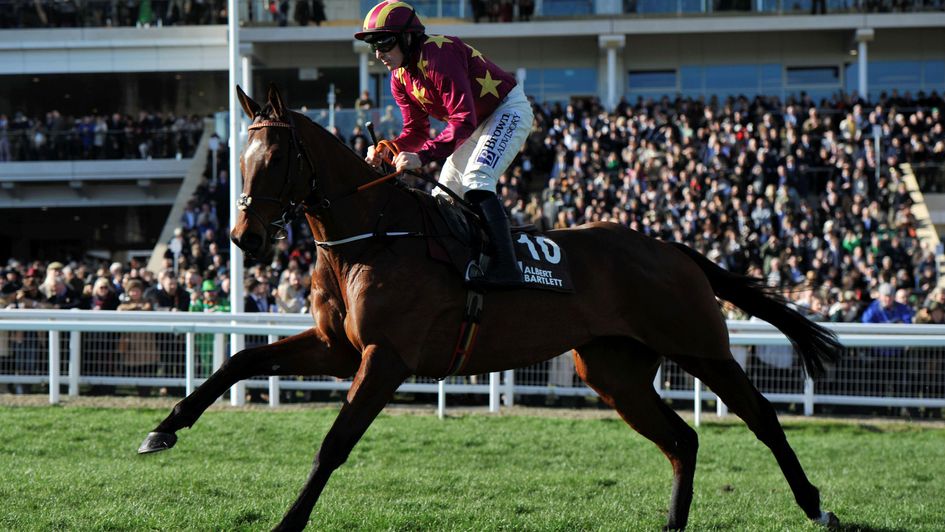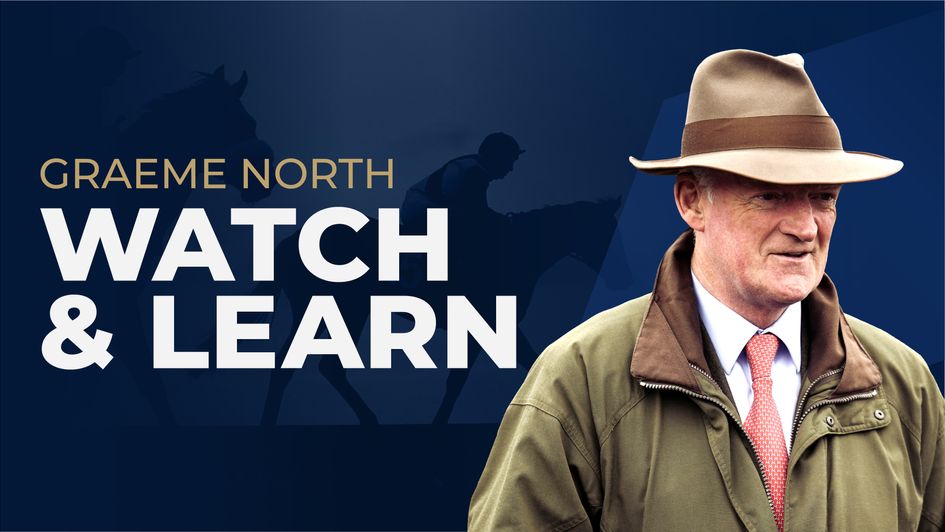Timeform's Graeme North reviews the recent action from a timefigure perspective including the Grade 1 card from Naas.
No Park life for racing clerks
Last Friday evening, a local Park run my wife frequents regularly, posted an update on its Facebook page suggesting the event would probably go ahead despite several other runs nearby already having earlier called off their weekly get-together because of bad weather. They posted an update early on Saturday morning confirming the event was on, much to my disbelief from under the duvet, and after some persuasion my wife decided finally to give it a miss. Just as well. Despite passing the first inspection, the event was cancelled shortly after the update when two of the officials went flying on black ice that presumably wasn’t visible when the inspection took place earlier that morning.
Sound familiar? That decision elicited a few grumbles but nearly everyone else agreed the decision was the correct one and, with it being local, any inconvenience on the day was minimal. The correct calling of those decisions, and in good time too, in professional sport, however, is a much weightier responsibility entirely and racing failed miserably on three different occasions last week with those called on to explain the late abandonments, or abandonments after racing had started, keen to direct the blame toward incorrect forecasts.
It may be that the media rights carrot and simultaneous reluctance not to be seen to be doing their very best to ‘help the levy’ has encouraged racecourses to cross their fingers far longer than they once would have, but some in the sport last week visibly seemed to lack the awareness their late abandonments, whether that be because of stubborn frost or too much water on the track, had caused for all the participants, spectators included, beyond horse and rider.
Pictures posted on social media by trainer Kerry Lee after fog-enveloped Chepstow was abandoned after the second race because of dangerous underfoot conditions showed the immense difficulties her horsebox had getting through the frost and snow on the access road to the track. I’m not sure what it is about Chepstow that thinks it was perfectly acceptable to race again in zero-visibility conditions but just imagine the uproar if a disorientated loose horse that hadn’t been spotted ends up crashing through the rails and then careers unseen into the path of one of the following safety vehicles or, even worse, spectators. Why take the chance?
Thoughts on the Irish action
Anyway, back to the action and while there may have been eight meetings over jumps on New Year’s Day there wasn’t the same quality on show there had been on Boxing Day or December 27.
Before getting around to the action in 2025, however, I’ll revisit New Year’s Eve at Punchestown where Ballyadam got the better of two other smart performers in a conditions hurdle in a 137 timefigure but any market moves so far as the Cheltenham Festival were concerned centred around Sainte Lucie who took the first hurdle on the card by what was given as 11 lengths with the third horse a further 13 away.
The final three-year-old hurdle of the year in Ireland, the race has often been used as an introductory starting point for some of Willie Mullins’ better juveniles and she built on the promise of her sole start in France at Auteuil in April where she looked something of a stayer to run out an easy winner. Her time wasn’t anything special but unsurprisingly she ran the section from each of three out, two out and the final obstacle to the line faster than any of the other hurdle winners on the card and putting all the timing information together I suspect she’s worth something around 125, albeit her race was significantly the first on the hurdles track on a day when the ground deteriorated notably as the day went on.
Promising enough then, but her compatriot Hello Neighbour has achieved a whole lot more as I wrote in my last column, and I can resist getting involved at the 12/1 generally on offer for the Triumph.
Earlier in the card, Shannon Royale found himself in a very different type of contest (much more steadily run) than he had against Dancing City three weeks previously and wasn’t impressive in a 97 timefigure but he’ll look a different horse given a much stiffer test of stamina, albeit one probably more likely to shine more in handicaps down the line than the Graded races he’ll be forced into from now on.
Ireland staged two cards on New Years Day, of which the more interesting was at Fairyhouse where the two chases, the Grade 3 for mares and the beginners were won by Allegorie De Vassy and Champ Kiely, respectively.
The winning distance for Allegorie De Vassy was given as 25 lengths and though her performance is hard to pin down on paper, a 141 timefigure on the back of a front-running ride that saw her jump better than she sometimes does probably wouldn’t be far off what she achieved in the day given that was right up with the best of her previous performances on the clock.
Champ Kiely also won his race from the front but in a much slower time (115) after his rivals allowed him to dictate soft fractions, so much so that he was able to run the time from the third last five seconds faster than Allegorie de Vassy despite not being challenged. The former Lawlor’s Of Naas winner jumped well enough on his chasing debut, albeit never pressured, and bearing in mind he’s lightly raced for a nine-year-old and managed a career high 142 over hurdles, further success will surely come his way over fences.
Across at Tramore, his stablemate Embassy Gardens took the Grade 3 New Year’s Day Chase, also making all in isolation against the inside rail. On the face of it he looks to have improved a good deal but given runner-up Monty’s Star almost certainly needed the race over an inadequate trip exacerbated by the steady pace and the remaining runners were a collective ragbag nearly all on the downgrade I very much doubt this represents the step forward it looks on paper with his closing sectional times moderate compared with those recorded by the last-race winner Maciver, who won his race off an Irish official mark of just 78.

Bay of plenty
Better timefigures were recorded at Cheltenham where both Springwell Bay in the handicap chase and Kalif du Berlais in the novice handicap posted 150 or higher.
Springwell Bay (himself a novice) advanced his form by 5lb or so in the Betfair Exchange Premier handicap, simultaneously running a career-best timefigure by 7lb on the back of a strong pace that allowed him to travel strongly in rear before making rapid progress to lead on the bridle in the short straight, so more than confirming the promise shown last time behind chasing debutant Jango Baie before Christmas.
In contrast, Kalif du Berlais made all his own running, setting a good pace for a three-runner race, jumping well and never looking in any danger, eventually coming home ten lengths clear in a 150 figure, a significant improvement on the 134 he posted at Newbury. He looks good enough to win a Graded event over fences.
Sunday’s sole-surviving action thankfully came from Naas featuring as it did the Grade 1 Lawlor’s Of Naas Hurdle as well as the Grade 2 Racing Post Novice Chase and an interesting beginners chase.
The Lawlors saw eight go to post headed, betting wise at least, by Jasmin de Vaux whose opening maiden win had been franked by subsequent wins for the second and third but he was very hesitant at several of the early hurdles and was a spent force in the straight faced with a much stiffer test of stamina than previously.
The race went to his nearest market rival, the progressive The Yellow Clay (144), who had finished behind Jasmin de Vaux in the Champion Bumper (if ahead of him at Punchestown) and was winning his fourth race in succession over hurdles having previously won two Graded events at Navan despite being clearly unsuited by a steady pace in the second of them. He’s now clear favourite for the Albert Bartlett, perhaps not unsurprisingly, and another horse who was cut in the Cheltenham betting was Ile Atlantique (152) after beating Firefox and a hanging Inthepocket in the Racing Post.
How much track position had to do with Ile Atlantique’s win is a moot point but given how stablemate Fun Fun Fun (130) took a very similar course in the opener, hugging the outside (The Other Mozzie, who won the handicap in between would have won from anywhere on the track against a bunch of misfits who were either out of form or needed the race) the answer is quite a lot I suspect and whether he’s quite as good is this makes him look you’d have to question.
On the scales
With it being a slow week, I was interested to read on the British Horseracing Authority website over the weekend a blog by their Head of Handicapping Dominic Gardiner-Hill which detailed the results of an investigation he had undertaken into the tweaks to the Flat Weight-For-Age Scale his predecessor Phil Smith had recommended in 2016 and which were implemented in 2017.
Gardiner-Hill explained he used a combination of approaches to determine the effectiveness of the changes implemented, one of which when looking at all-aged handicaps run in Britain, Ireland and Germany was win and place impact value which he defined as the number of wins (or places) that would be expected compared to random chance.
Several years ago, in an attempt to get around the suspect notion of random chance as part of an investigation into which domestic handicapping environments (sprinters, seven-furlong contests or low-grade staying races, for example) were the easiest and which were the toughest, I constructed what I termed the ‘Race Competitive Index’ involving a calculation based not only on Betfair BSP win and place prices but also their distribution within the same race. The results were quite stark – barely nine percent of all handicaps ended up in the category that might best be described as ‘decided by random chance’ with a much bigger and unhealthier number coming under the umbrella ‘thoroughly uncompetitive’.
Gardiner-Hill rightly avoided transposing his domestic handicap conclusions (where, generally speaking, other than longer distances weight-for-age is not the overwhelming factor) into further tweaks to the International Pattern scale and came to the conclusion that the existing scale was pretty much on point save for some small alterations, largely to the allowances received by three- and four-year-olds over a mile and three-quarters and more.
I don’t deny the scale is fairly accurate at listed and pattern level for those distances where plenty of inter-generational data exists but in my long experience at Timeform it’s very clear that inaccuracies in the weight-for-age scale manifest themselves most clearly in questionable timefigures and so far as two-year-olds are concerned, parts of the amended new official scale are still a long way off where they should be. The new scale suggests two-year-olds over a mile in the first half of August are 35lb immature compared to older horses whereas Timeform use 22lb which I suspect even now is too generous.
More from Sporting Life
- Racecards
- Fast results
- Full results and free video replays
- Horse racing news
- Horse racing tips
- Horse racing features
- Download our free iOS and Android app
- Football and other sports tips
- Podcasts and video content
Safer gambling
We are committed in our support of safer gambling. Recommended bets are advised to over-18s and we strongly encourage readers to wager only what they can afford to lose.
If you are concerned about your gambling, please call the National Gambling Helpline / GamCare on 0808 8020 133.
Further support and information can be found at begambleaware.org and gamblingtherapy.org.







